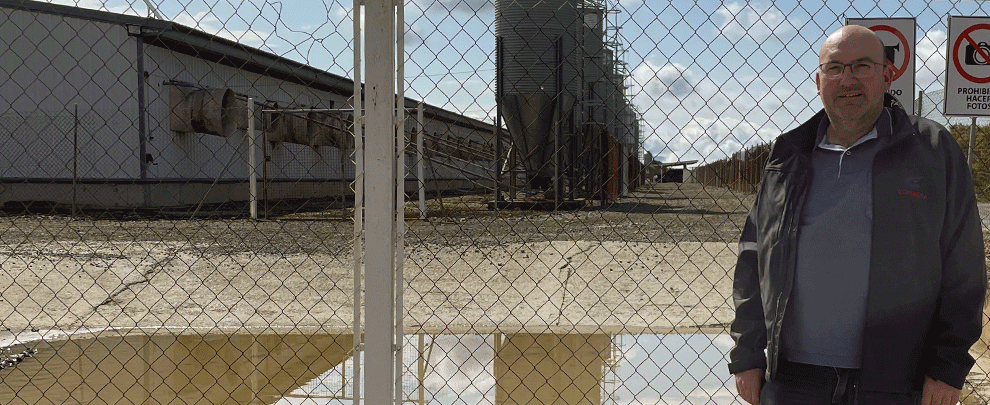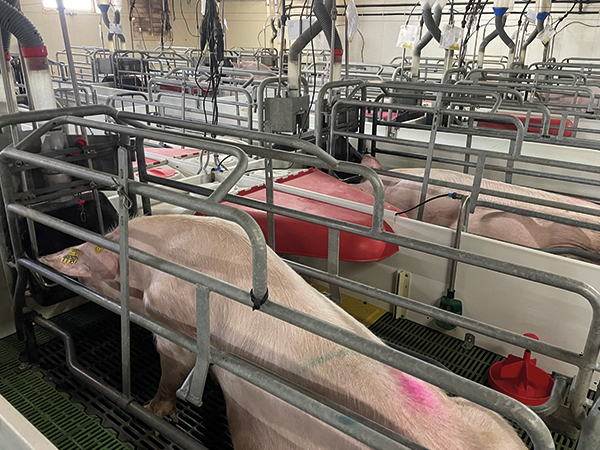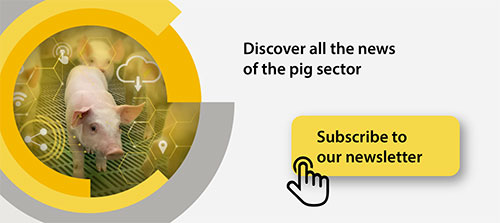Blog
Blog

X. Altemir: “After 25 years, we continue to trust Rotecna for their good results”
24th July 2024 - Success stories
Since its construction 25 years ago, many things have changed in Granja Comorera SL, located in the Huesca municipality of Estopiñán del Castillo. Despite all these changes, their confidence in Rotecna’s pig equipment solutions remains as good as it was on the first day. We spoke with Xavier Altemir Xipell, the current manager of the farm, with whom we reviewed the evolution of this livestock facility, which currently has a capacity for 3,500 production sows.
When and why did you decide to commit yourself to pig farming?
It is something vocational that comes to me from when I was little. We had some sows at home, and they had always interested me. I studied agricultural engineering and specialised in animal production. When I finished my studies, I did an internship on a pig farm, and when I finished, I already started working in this sector, to which I am still linked. I have been in charge of Granja Comorera SL in Estopiñán del Castillo (Huesca), belonging to Grupo Piensos Costa, SA, for seventeen years.
The farm’s capacity was 3,500 sows at its beginning. How has it evolved?
Today, we maintain the capacity of 3,500 productive sows, but many things have changed. When the farm was built, it also had 9,600 weaning places where 18-kilogram piglets were delivered. Due to animal welfare modifications, we removed these weaning places and replaced them with new farrowing pens and covering rooms. In 2020, a new 18,000-seat weaning farm was built on a farm 5 kilometres from the sows’ farm, and, in addition, a farm was acquired to be used for breeding.
After these changes, how has the distribution of the farm changed?
Since its construction, it has changed a lot, especially the interior. It is essential to denote that we work with the nulliparous sows separately in covering. Therefore, we have a covering area for nulliparous and another for multiparous. The pens of confirmed gestation sows have also been modified and adapted to the different regulations regarding welfare, and we currently work with pens of 13 to 15 animals. On the other hand, in the beginning, we had a warehouse with 24 farrowing rooms with 24 seats each, a total of 576 places. So, we were weaning after 21 days. We created five new rooms with 56 farrowing pens each when we built the new weaning farm. This way, we increased our capacity with 280 new farrowing places and weaned after 28 days.
What are these lactation places like?
We can differentiate between the old and the new. The first are smaller and have an area of 1.60 x 2.40 m. There are cast iron slats under the sow, plastic slats on the sides and Rotecna dispensers.The newer rooms are a weaning conversion and are “sandwich” type, with four aisles and seven animals on each side. These pens are more prominent; they have dimensions of 1.70 x 2.70 m, and the Rotecna slats and dispensers also have the Ni-2 Corner, which makes handling the animals much easier for us, providing more comfort to the animals. Piglets even increase their weight and represent significant energy savings.

Interior view of one of the farrowing rooms. Photo: X. Altemir.
At the time, they already had Rotecna solutions. Why do they still trust the brand?
It is an up-to-date brand with innovative, quality products and extended durability. When the farm was built, many of Rotecna’s pig equipment solutions were installed, and after more than 25 years, we continue to trust them for the good results they offer us. Currently, almost all farrowing pen products are Rotecna’s. We have the slats, nests, dispensers, the Basic Post Beam floor support system, etc.
What future investments do you have planned?
The farm is now 25 years old, and we have to make essential modifications because many things have changed in all this time. Right now, we are awaiting a significant restructuring. We must remodel the entire farm to implement feed automation with Rotecna’s Dositronic system, use cleaning robots, adapt handling, etc. To move forward, many things must be considered, especially regarding productivity, sustainability, and animal welfare.
How do you assess the evolution of the Spanish pork industry in the last 25 years?
It has been immense. If we entered a farm 25 years ago and one from today, we could already see the significant steps that the industry has taken in terms of management, well-being, biosafety, automation, health, disinfection, and cleaning of facilities, etc. We have become professional and have adapted to all the regulations that have arisen, both in terms of animal welfare and environmental sustainability, thanks to which animals live much better and the impact on the environment has been reduced. Thanks to this we can produce better products at lower costs. Today, our farms are more efficient than 25 years ago.
Where do you think the industry should go now?
We must inform society, the people who see us from the outside and do not know our reality. It is necessary to explain what we do, who we are, how we work, and the value we give to rural areas where we are an engine of job creation and population fixation in the towns. We are vital assets, but we have to make ourselves better known and explain all the good things we have.








